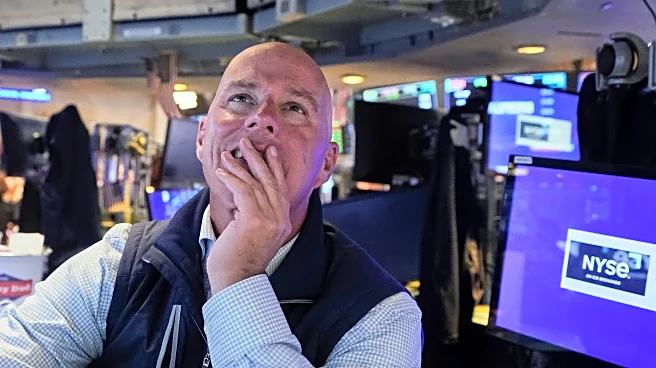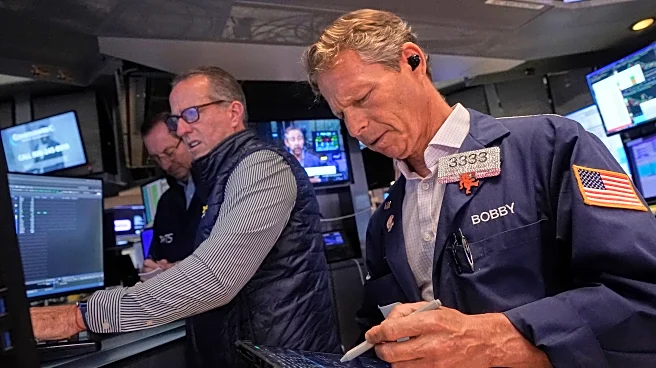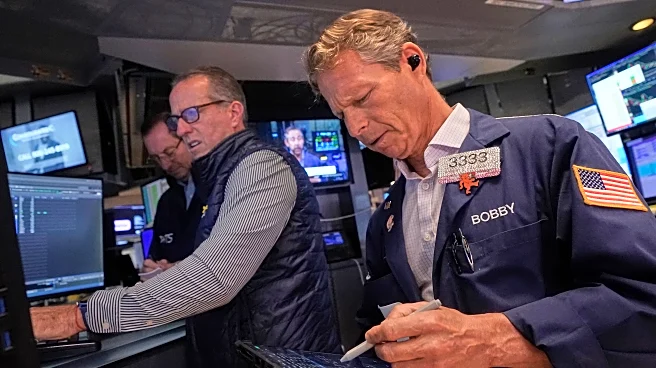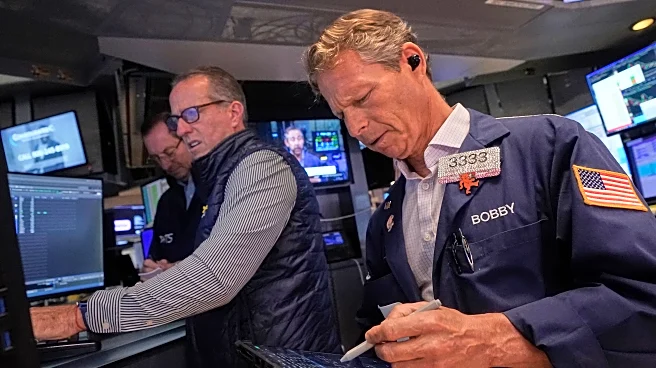What's Happening?
Wall Street experienced a surge to record highs on Monday, driven by expectations of a Federal Reserve interest rate cut. The Standard & Poor’s 500 climbed 0.5%, surpassing its previous all-time high, while the Dow Jones Industrial Average rose by 49 points, or 0.1%, and the Nasdaq Composite increased by 0.9%. Tesla's stock rose 3.6% following Elon Musk's purchase of approximately $1 billion in shares, signaling confidence in the company. Alphabet also contributed significantly to the S&P 500's rise, gaining 4.5% and pushing its market value above $3 trillion. The market is closely watching the Federal Reserve's upcoming decision on interest rates, with expectations of a cut that could stimulate the slowing job market.
Why It's Important?
The anticipation of a Federal Reserve rate cut is significant as it could impact the U.S. economy by potentially boosting employment and corporate profits. Lower interest rates generally encourage borrowing and investment, which can lead to economic growth. However, there are concerns about inflation, particularly due to President Trump's tariffs, which could be exacerbated by lower rates. The stock market's reliance on the expectation of rate cuts poses a risk; if the Federal Reserve does not meet these expectations, it could lead to market volatility. Additionally, the focus on a narrow slice of the economy, with major companies like Alphabet and Tesla driving market gains, highlights potential vulnerabilities in the broader economic landscape.
What's Next?
The Federal Reserve's decision on interest rates is expected on Wednesday, with market participants closely monitoring Fed Chair Jerome Powell's press conference for insights into future monetary policy. The Fed's projections for interest rates and economic conditions will be crucial in shaping market expectations. If the rate cut is less aggressive than anticipated, it could lead to disappointment and potential declines in stock prices. Furthermore, ongoing concerns about inflation and the job market will continue to influence the Fed's policy decisions and the overall economic outlook.











